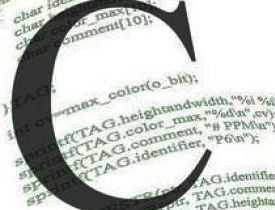Description
Course Name: Certificate in C Programming
Course Id: CCP/Q1001.
Education Qualification: 12th Pass.
Duration: 90 Hrs.
How You will Get Diploma Certificate:
Step 1- Select your Course for Certification.
Step 2- Click on Enroll Now.
Step 3- Proceed to Enroll Now.
Step 4- Fill Your Billing Details and Proceed to Pay.
Step 5- You Will be Redirected to Payment Gateway, Pay Course and Exam Fee by Following Options.
Card(Debit/Credit), Wallet, Paytm, Net banking, UPI and Google pay.
Step 6- After Payment You will receive Study Material on your email id.
Step 7- After Completion of Course Study give Online Examination.
Step 8- After Online Examination you will get Diploma Certificate soft copy(Scan Copy) and Hard Copy(Original With Seal and Sign).
Step 9- After Certification you will receive Prospect Job Opportunities as per your Interest Area.
Online Examination Detail:
Duration- 60 minutes.
No. of Questions- 30. (Multiple Choice Questions).
Maximum Marks- 100, Passing Marks- 40%.
There is no negative marking in this module.
Benefits of Certification:
- Government Authorized Assessment Agency Certification.
- Certificate Valid for Lifetime.
- Lifetime Verification of Certificate.
- Free Job Assistance as per your Interest Area.
Syllabus
Certificate in C Programming
Introduction to C Language
Control Structures
Functions
Storage Classes, Structures & Union
Introduction to Graphics & pointers
Arrays
Introduction to C Language
Structure of a C program, C Conventions, Character Set, Identifiers, Keywords, Simple Data types, Modifiers, Variables, Constants, Operators (Arithmetic operator, relational operator, logical operator, ternary operator, unary operator, shorthand operator, bit-wise operator and arithmetic operator) Operator precedence. Input and Output operation: Single character input and output, formatted input and output, Buffered input.
Control Structures
Introduction, Conditional statement, if statement, if-else statement, nested if statement, else if statement and switch statement. Go to statement. Looping statement, while statement, do while statement, for statement, break and continue, nested for statement. – Introduction to Structured Programming, Functions- basics, user defined functions, inter function communication (call by value, call by reference), Standard functions. Storage classes-auto, register, static, extern, scope rules, arrays to functions, recursive functions, example C programs.
Functions
Introduction, advantages of subprograms, Function definition, function call, Actual and formal arguments, local and global variables, function prototypes, types of functions, recursive functions, arrays and functions. Storage classes-auto, register, static, extern, scope rules, arrays to functions, recursive functions, example C programs.
Storage Classes, Structures and Unions
Introduction, types of storage classes, Introduction to structures, Advantages of structures, accessing elements of a structure, nested structures, array of structures, functions and structures, Unions, bit-fields, enumerated data types, Introduction, types of storage classes, Introduction to structures, Advantages of structures, accessing elements of a structure, nested structures, array of structures, functions and structures, Unions, bit-fields, enumerated data types.
Introduction to Graphics & Pointers
Concepts of Graphics, Graphics Initialization and Modes, Graphics Function, Create graphics program that address some basic functions of graphics.h header file, e.g. line(), arc(), circle(), ellipse(), floodfill(), getmaxx(), getmaxy() etc, Create programs that addresses pointer arithmetic, pointers and arrays, pointer and character strings, pointers and functions, pointer and structure, and dynamic memory allocation.
Arrays
Create, manipulate arrays and matrices (single and multi-dimensional), work with pointers, dynamically allocate/de-allocate storage space during runtime, manipulate strings (character arrays) using various string handling functions, Create user-defined functions with/without parameters or return type, create recursive functions, use function call by value and call by address, work with automatic, global and static variables.

